The Immune System 4th Edition Parham Test Bank
$38.00
The Immune System 4th Edition Parham Test Bank Download
- Description
- Reviews (0)
Description
You will receive this product immediate after placing the order
All resources are in electronic format and can be downloaded from your account or email – How to Download. Payments will be processed instantly after checkout. Please note that all sales are final and non refundable. If you still have questions, find answers on our FAQ page or just send us an email at inquiry@testbanksafe.com, we will respond as soon as possible.
THE IMMUNE SYSTEM, FOURTH EDITION
CHAPTER 1: ELEMENTS OF THE IMMUNE SYSTEM AND THEIR ROLES IN DEFENSE
© 2015 GARLAND SCIENCE
1–1 The last cases of smallpox were reported in the _____.
a. 1950s
b. 1960s
c. 1970s
d. 1980s
e. 1990s.
1–2 The first line of defense against microorganisms that infect the body is referred to as _____.
a. opportunistic immunity
b. innate immunity
c. adaptive immunity
d. primary immunity
e. central immunity.
1–3 Which of the following pairs is mismatched?
a. innate immunity: highly specialized defenses
b. secondary immune response: immunological memory
c. hematopoiesis: bone marrow
d. phagocytosis: uptake and killing of microbes
e. lymphocyte recirculation: continuous transport between blood and lymph.
1–4 All of the following are examples of chemical barriers of innate immunity except _____.
a. lactic acid
b. normal microbiota
c. lysozyme
d. fatty acids
e. proteases.
1–5 When effector lymphocytes secrete _____, an inflammatory response ensues.
a. lysozyme
b. defensins
c. lymph
d. sebum
e. cytokines.
1–6 The thin layer of cells that makes up the interior lining of the blood vessels is called the _____.
a. mucosa
b. epithelium
c. endothelium
d. connective tissue
e. lymphoid tissue.
1–7 Identify the incorrect statement regarding hematopoiesis.
a. Hematopoiesis is a continuous process that occurs throughout one’s lifetime.
b. The location for hematopoiesis differs with age.
c. Self renewal is necessary to replenish the supply of hematopoietic stem cells.
d. Most hematopoiesis occurs in the bone marrow after birth.
e. Leukocytes, but not erythrocytes, must go through hematopoiesis in order to develop.
1–8 The progenitors of macrophages are _____.
a. megakaryocytes
b. dendritic cells
c. monocytes
d. neutrophils
e. erythrocytes
f. M cells.
1–9 _____ act as cellular messengers by delivering degraded pathogens to lymphoid organs.
a. Plasma cells
b. Dendritic cells
c. Large granular lymphocytes
d. Mast cells
e. Basophils.
1–10 Another name for a large granular lymphocyte is a _____.
a. plasma cell
b. helper T cell
c. monocyte
d. natural killer cell
e. eosinophil.
1–11 Effector cells that secrete antibodies are known as _____.
a. natural killer cells
b. cytotoxic T cells
c. helper T cells
d. M cells
e. plasma cells
f. regulatory T cells.
1–12 Spherical regions in lymph nodes containing areas that are packed densely with proliferating B cells are called _____.
a. efferent vessels
b. germinal centers
c. red pulp zones
d. periarterial lymphoid sheaths
e. medullary sinuses.
1–13 The _____ is (are) the lymphoid organ(s) that filter(s) the blood.
a. spleen
b. tonsils
c. Peyer’s patches
d. appendix
e. adenoids.
1–14 _____ cells persist long after an individual has been vaccinated.
a. Neutrophil
b. Plasma
c. Memory
d. M
e. Mast.
1–15 During an infection, _____ are mobilized in large numbers from the bone marrow.
a. dendritic cells
b. memory cells
c. macrophages
d. neutrophils
e. B cells.
1–16 In most cases, adaptive immune responses rely on the initial activation of _____ in secondary lymphoid tissue:
a. macrophages
b. T cells
c. B cells
d. dendritic cells
e. epithelium.
1–17 All of the following statements are characteristic of secondary immune responses except _____.
a. Secondary immune responses are activated when primary immune responses fail to completely eradicate an infection.
b. Secondary immune responses are restricted to adaptive immune responses.
c. Memory cells are activated rapidly during secondary immune responses.
d. Secondary immune responses are orders of magnitude greater than primary immune responses.
e. During a secondary immune response to a booster vaccine, it is possible to experience a primary immune response to an unrelated vaccine component encountered for the first time.
1–18 Identify the four classes of pathogens that provoke immune responses in our bodies and give an example of each.
1–19 A bacterium that causes a common disease in a population that has been previously exposed to it is called _____.
a. opportunistic
b. resistant
c. commensal
d. endemic
e. attenuated.
1–20
A. Name the parts of the body where epithelia act as barriers to infection.
B. Describe the three main ways in which epithelia carry out this barrier function, giving details of the mechanisms employed.
1–21 An example of an antimicrobial peptide that protects epithelial surfaces from pathogens is _____.
a. glycoprotein
b. defensin
c. proteoglycan
d. lysozyme
e. sebum.
1–22 How can antibiotics upset the barrier function of intestinal epithelia? Give a specific example.
1–23 Describe the characteristics commonly associated with inflammation and what causes them.
1–24 Which of the following are characteristics of innate immunity:
a. inflammation
b. improvement in recognition of the pathogen during the response
c. fast response
d. highly specific for a particular pathogen
e. cytokine production.
1–25 Which of the following statements regarding neutrophils is false?
a. Neutrophils are mobilized from the bone marrow to sites of infection when needed.
b. Neutrophils are active only in aerobic conditions.
c. Neutrophils are phagocytic.
d. Neutrophils form pus, which comprises dead neutrophils.
e. Dead neutrophils are cleared from sites of infection by macrophages.
1–26 What are the main differences between innate immunity and adaptive immunity?
1–27
A. Identify the two major progenitor subsets of leukocytes.
B. Where do they originate in adults?
C. Name the white blood cells that differentiate from these two progenitor lineages.
1–28 Primary lymphoid tissues are the sites where lymphocytes _______, whereas secondary lymphoid tissues are the sites where lymphocytes _______.
a. are stimulated; develop and mature
b. encounter pathogens; undergo apoptosis
c. develop and mature; become stimulated
d. undergo clonal selection; differentiate from hematopoietic stem cells
e. die; are phagocytosed after death.
1–29 The spleen differs from other secondary lymphoid organs in which of the following ways?
a. It does not contain T cells.
b. It filters blood as well as lymph.
c. It is populated by specialized cells called M cells.
d. It receives pathogens via afferent lymphatic vessels.
e. It has no connection with the lymphatics.
1–30 What are clonal selection and clonal expansion in the context of an adaptive immune response? Describe how they shape the adaptive immune response.
1–31 What would be the consequence of a bioterrorist attack that released smallpox virus into a city?
1–32 Examples of pathogens that cause human disease include:
a. bacteria
b. viruses
c. fungi
d. parasites (protozoans and worms).
e. All of the above are examples of pathogens that cause human disease.
1–33 Which of the following is not associated with mucosal surfaces?
a. mucus-secreting goblet cells
b. lysozyme
c. M cells
d. white pulp
e. beating cilia.
1–34 Phagocytosis of either microbes or microbial constituents by macrophages is followed by the activation of macrophages and the secretion of cytokines. What are the main effects of these molecules?
1–35 Identify the different anatomical locations where hematopoiesis occurs in embryonic, fetal, and adult life.
1–36 Which of the following pairs is mismatched?
a. lymphocytes: innate immune response
b. natural killer cell: kills virus-infected cells
c. macrophage: phagocytosis and killing of microorganisms
d. erythrocyte: oxygen transport
e. eosinophil: defense against parasites.
1–37 A term generally used to describe all white blood cells is _____.
a. hematopoietic cells
b. myeloid progenitor
c. dendritic cells
d. monocytes
e. leukocytes.
1–38 Examples of granulocytes include all of the following except:
a. neutrophil
b. monocyte
c. basophil
d. eosinophil.
e. All of the above are examples of granulocytes.
1–39 The most abundant type of leukocyte in human peripheral blood is the _____.
a. eosinophil
b. basophil
c. neutrophil
d. monocyte
e. lymphocyte.
1–40 Which of the following statements are correct?
a. Macrophages are granulocytes.
b. Macrophages derive from monocytes.
c. Macrophages are non-phagocytic.
d. Macrophages reside in the tissues.
e. All of the above statements are false.
1–41 Which of the following pairs is mismatched?
a. monocyte progenitor: macrophage
b. erythroid progenitor: megakaryocyte
c. myeloid progenitor: neutrophil
d. lymphoid progenitor: natural killer cell.
e. None of the above is mismatched.
1–42 Which of the following pairs of associations is mismatched?
a. large granular lymphocyte: T cell
b. megakaryocyte: platelet
c. B cell: plasma cell
c. monocyte: macrophage
d. myeloid progenitor: neutrophil.
1–43 Which of the following statements is false?
a. During human development, hematopoiesis takes place at different anatomical locations.
b. The hematopoietic stem cell gives rise to white blood cells, but a different stem cell is the progenitor of red blood cells.
c. Hematopoietic stem cells are self-renewing.
d. Platelets participate in clotting reactions to prevent blood loss.
e. Megakaryocytes do not circulate and reside only in the bone marrow.
1–44 Which of the following describes the flow of lymph through a lymph node draining an infected tissue?
a. efferent lymphatic vessel rightarrow lymph node rightarrow afferent lymphatic vessel
b. venule rightarrow lymph node rightarrow efferent lymphatic vessel
c. afferent lymphatic vessel rightarrow lymph node rightarrow efferent lymphatic vessel
d. artery rightarrow lymph node rightarrow efferent lymphatic vessel
e. afferent lymphatic vessel rightarrow lymph node rightarrow artery.
1–45 Immune cells within the lymphatic circulation are directly deposited into which of the following anatomical sites so that the cells may reenter the bloodstream?
a. right aorta
b. left subclavian vein
c. left carotid artery
d. high endothelial venule
e. hepatic vein.
1–46 Which of the following is the predominant route by which pathogens are brought from a site of infection into a lymph node?
a. efferent lymphatics
b. artery
c. vein
d. afferent lymphatics
e. high endothelial venule.
1–47 Why does it take approximately a week after infection for the benefits of an adaptive immune response to start to be felt?
1–48 Vaccination is best described as prevention of severe disease by _______.
a. the deliberate introduction of a virulent strain of an infectious agent
b. prior exposure to an infectious agent in an attenuated or weakened form
c. prophylactic treatment with antibiotics
d. stimulating effective innate immune responses
e. using effective public-health isolation regimens such as quarantine.
1–49
Describe three distinct mechanisms by which antibodies eradicate infection.
1–50 Which of the following explains why immunity to influenza may appear to be relatively short-lived?
a. Effective immunological memory fails to develop.
b. Immune responses to influenza involve innate immune mechanisms only.
c. The primary and secondary immune responses are equivalent.
d. Influenza virus targets memory cells.
e. New influenza variants able to escape previous immunity appear regularly.
ANSWERS
1–1 c
1–2 b
1–3 a
1–4 b
1–5 e
1–6 c
1–7 e
1–8 c
1–9 b
1–10 d
1–11 e
1–12 b
1–13 a
1–14 c
1–15 d
1–16 b
1–17 a
1–18 The four classes of pathogen are bacteria, viruses, fungi, and parasites (protozoa and worms). Examples of these pathogens are given in Figure 1.4.
1–19 d
1–20
A. Skin; mucosal epithelium of the gastrointestinal tract; mucosal epithelium of the respiratory tract; mucosal epithelium of the urinogenital tract.
B. (i) Mechanical (physical) barriers. Tight junctions between the epithelial cells prevent the penetration of pathogens between the cells to underlying tissues. In addition, there is a flow of air and fluid over epithelial surfaces, which oxygenates and flushes the surface, preventing anaerobic bacterial growth and transient adhesion. On ciliated epithelial surfaces, such as those of the respiratory tract, the formation of a layer of mucus that is kept in continual movement by the beating cilia inhibits colonization and invasion by microorganisms. (ii) Chemical barriers. The epithelium produces a variety of chemical substances that interfere with the adherence of microorganisms to epithelium and with their replication. The skin produces fatty acids in sebaceous glands, which helps to create an acid environment inhibitory to the growth of many bacteria. Lysozyme, an enzyme that inhibits cell-wall formation in bacteria, is secreted in tears, saliva, and sweat. The stomach produces strong hydrochloric acid, creating a highly acidic and formidable environment, which when combined with the stomach enzyme pepsin (an acid protease) poses one of the most inhospitable environments for microbial growth in our bodies. Defensins are antimicrobial peptides secreted by all the protective epithelia. (iii) Microbiological barriers. A microbiota of non-pathogenic commensal microorganisms colonizes many epithelial surfaces and provides an additional barrier to infection. They compete with pathogenic microbes for space and nutrients, and sometimes produce antibacterial proteins that further inhibit attachment to epithelium. For example, Escherichia coli in the large intestine produce colicins, which prevent colonization by other bacteria.
1–21 b
1–22 Antibiotics attack the microbiological barriers of intestinal epithelia. The normal microbiota sensitive to the antibiotics are killed off and the intestine can then be recolonized and overgrown by microorganisms that in normal circumstances are present in very small numbers and thus do not cause a problem. An example is a condition called pseudomembranous colitis caused by the overgrowth of Clostridium difficile. A membrane-like substance is produced in the large intestine, causing an obstruction that can block intestinal flow and usually requires surgical removal.
1–23 The hallmarks of inflammation are heat, redness, pain, and swelling (edema). These are caused by a combination of vasodilation (causing redness and heat), increased vascular permeability and the consequent infiltration of fluid and leukocytes from the blood into the infected site (causing swelling, and also pain as a result of the increased pressure on local nerve endings).
1–24 a, c, e
1–25 b
1–26 Innate immune responses are initiated almost immediately after infection, whereas adaptive immunity takes longer to develop. Innate immunity uses generalized and invariant mechanisms to recognize pathogens. Examples of these are the receptors on phagocytes that recognize surface molecules shared by many different pathogens and stimulate phagocytosis, and serum proteins such as complement. Innate immunity is often unable to eradicate the pathogen completely, and even when it does, it does not produce immunity to reinfection. An adaptive immune response, in contrast, involves specific recognition of the particular pathogen by highly specific receptor on a subset of lymphocytes, which are selected from a pool of millions of lymphocytes each bearing receptors specific for different molecules. Adaptive immunity is often powerful enough to eradicate the infection and provides long-term protective immunity through immunological memory.
1–27
A. The two major progenitor subsets of leukocytes are the common lymphoid progenitor and the myeloid progenitor.
B. In adults, all leukocytes originate in the bone marrow and are derived from pluripotent hematopoietic stem cells.
C. The common lymphoid progenitor differentiates into three cell types: B cells, T cells, and natural killer (NK) cells. The myeloid progenitor differentiates into six main cell types: basophils, eosinophils, neutrophils, mast cells, dendritic cells, and monocytes. Monocytes are circulating leukocytes that enter tissues, where they then differentiate into macrophages.
1–28 c
1–29 e
1–30 In an adaptive immune response to a pathogen, the term clonal selection describes the fact that only those lymphocytes that can recognize that particular pathogen and respond to it are selected to participate in the immune response. Clonal expansion describes the proliferation and subsequent differentiation of these few original lymphocytes to provide large numbers of effector lymphocytes. Clonal selection ensures that the adaptive response will be tailored specifically for the particular type of pathogen involved in the infection. Clonal expansion ensures that the few original lymphocytes specific for the pathogen produce a large population of effector lymphocytes that can make an effective immune response against the pathogen.
1–31 The last case of smallpox was reported in the 1970s. As a result, children are no longer vaccinated routinely as was the case before smallpox was eradicated. A large proportion of any given population today would be unvaccinated, and thus susceptible to smallpox infection. The mortality rate would be high (30–50%) among those not protected by vaccination.
1–32 e
1–33 d
1–34 The cytokines released by activated macrophages have three principal effects. Some cytokines act as chemoattractants and recruit other leukocytes into the infected tissue, for example neutrophils, which efficiently phagocytose and kill bacteria, forming pus. Other cytokines act on the endothelial cells of local blood vessels to increase vascular permeability and vasodilation, thus initiating inflammation of the infected tissue.
1–35 The yolk sac and the liver produce blood cells in the embryo and early fetus through the first three months of gestation. The fetal spleen takes over this function from the third to the seventh months. Once developed, the bone marrow is the site of hematopoiesis from the fourth month of gestation throughout the remainder of fetal development and into adulthood.
1–36 a
1–37 e
1–38 b
1–39 c
1–40 b, d
1–41 e
1–42 a
1–43 b
1–44 c
1–45 b
1–46 d
1–47 Before the establishment of an effector population of lymphocytes, several events must occur: (1) specific recognition of pathogen by lymphocyte receptors (clonal selection); (2) proliferation of pathogen-specific lymphocytes to expand responding populations (clonal expansion); and (3) differentiation into effector lymphocytes with the resulting establishment of an organized adaptive immune response.
1–48 b
1–49
(i) Neutralization. By binding to the surface of a pathogen, antibodies interfere with the ability of the pathogen to grow and replicate. Antibody binding to a pathogen or a bacterial toxin can also inhibit its binding to receptors on host cells and therefore prevent its entry into cells. (ii) Opsonization. Antibody coating the surface of a pathogen or toxin can promote phagocytosis of the antibody-covered particle. Antibodies acting in this way are known as opsonins. The antibody-bound material interacts with Fc receptors on the surface of phagocytic cells such as macrophages and neutrophils, which bind the constant region (the stem) of the antibody. Stimulation of Fc receptors in this way stimulates the engulfment and degradation of antibody-coated material by the phagocyte. (iii) Complement activation. IgG or IgM antibody bound to a pathogen stimulates activation of the complement system, leading to the deposition of complement proteins on the surface of the pathogen. Certain of these act as opsonins and bind to complement receptors on phagocytic cells to stimulate the phagocytosis and destruction of the pathogen.
1–50 e
Be the first to review “The Immune System 4th Edition Parham Test Bank”
You must be logged in to post a review.


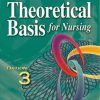
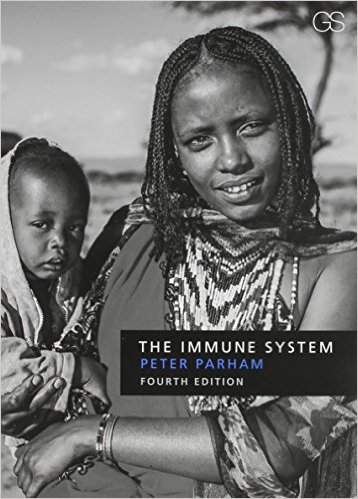
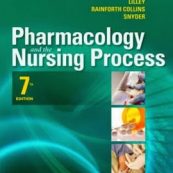

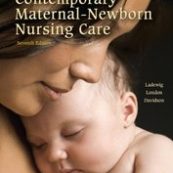
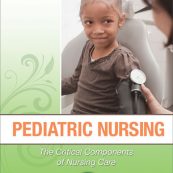
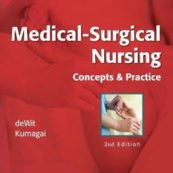
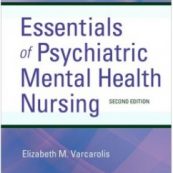
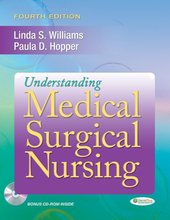
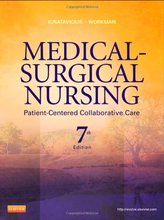
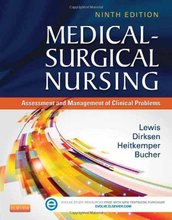
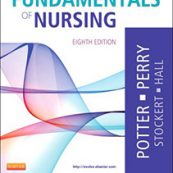
Reviews
There are no reviews yet.